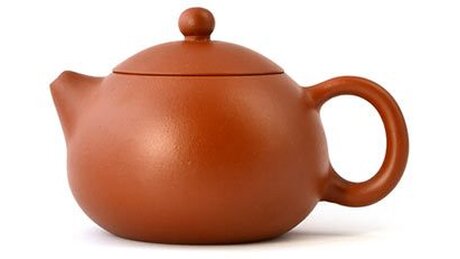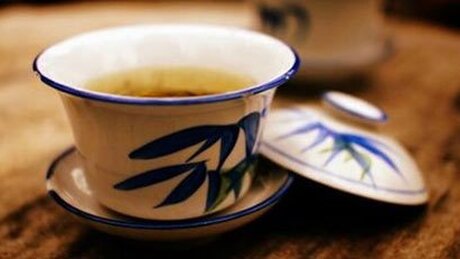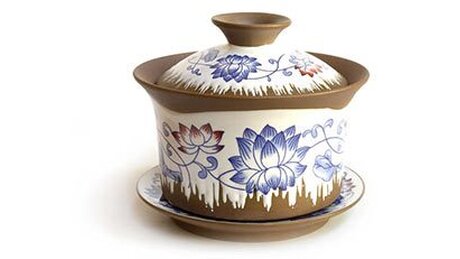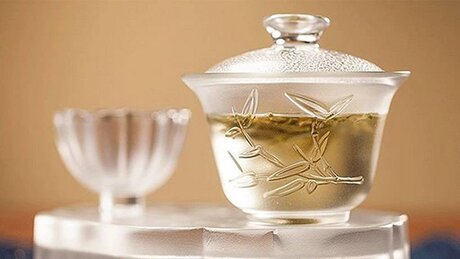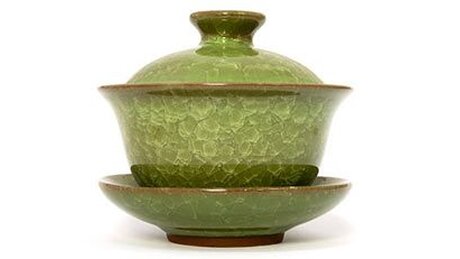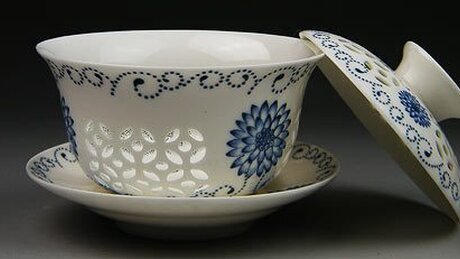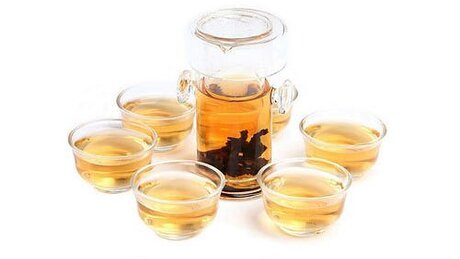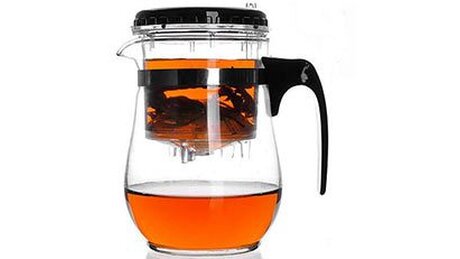In one of initial lessons I have made a table on which tea-ware better fits for each tea type. Here I’ll give more detailed insight to the benefits and drawbacks of each kind of tea-ware.
Now we review tea brewing in two classic vessels: a gaiwan and a teapot, as they are most appropriate for the classic tea and help to consistently develop the flavor and aroma of the tea leaf. With the right choice of tea-ware the tea will reveal itself in all its beauty.
The principal rule: the higher the fermentation and roasting degree, the greater the extent of steeping is required at brewing.
Yixing clay
Clay retains heat quite long. Some teapots after the last steeping remain hot up to 20 minutes while 5–10 minutes is enough for our purposes. In such tea-ware strongly fermented teas do not cool, between steepings tea leaves get steamed each time delivering brighter flavor and upon reaching the peak of brewing fade out slowly and smoothly. If you brew a green tea in clay vessel it is very intense from the first steeping, sometimes is too astringent and wears off quickly. Teapots are good for accumulation and preserving of heat.
Porcelain tea-ware
This is indeed the universal tea-ware. You can brew any tea in it. It cools down faster than clay so do not abstract for long when brewing strongly fermented teas in it. It retains heat for 3–5 minutes which is appropriate for any brewing. Further the main role belongs to water temperature. One of the advantages of porcelain gaiwan is the lid which can be removed allowing for swift cooling of the tea leaf. This is of prime importance for fresh sheng pu’ers. In Yúnnán sheng pu’ers up to 5 years of age are brewed in porcelain gaiwans, more mature — in Yixing teapots.
Gaiwans of clay
A brewing vessel quite rare to find and not coincidentally. Clay gaiwan quite well retains heat at its bottom (thick foot and a saucer) while thin lid lets the heat out. Unfold tea leaf inside the gaiwan remains in minor motion, cling to harsh walls and tea therefore brews unevenly: at the bottom tea leaves are well steeped while at the top they are understeeped. The tea will brew anyway however lacking the full-fledged and harmonious flavor peak. Steeping will most probably require extra time with a slapdash result. Such thermal gaps and varied rate of tea leaf steeping are not inherent to porcelain and glass gaiwans.
Glass tea-ware
The major advantage of the glass is in its ability to cool down swiftly and tea leaves do not simmer in it. It suits perfectly for brewing of green and yellow teas, which are the least fermented. In glass vessel they will softly develop from cup to cup each time rejoicing with their flavor.
"Cracked ice" tea-ware
In this type the lid as well as the body of gaiwan is covered with thick layer of glazing and therefore retains the heat better. The tea brews more or less evenly.
Rice Grain porcelain
As long as in such porcelain walls of the vessel are thin and partly made of glaze, it better fits for brewing green, yellow and lightly roasted oolongs. In any case shu pu’er will look in it absolutely inappropriate.
Brewing flasks
They are designed for the red tea. All Chinese manufacturers point out that the purpose of this vessel is brewing red tea. Such tea-ware is meant for metropolitan residents, whose attitude to tea is quite easy and they prefer to brew it without any bother. In a brewing flask tea may undergo several steepings though only the first one will be tasteful and healthy. It does not much suit for unveiling of a good tea. The tea leaf will cool off, the flavor will be distorted and health utility will diminish. Even manufacturers do not recommend using flask for any purpose other than brewing of red tea.
Push-button teapots
Another option for office use similar to flask. If you are up to the single steeping it will do quite well. As soon as you remove the filter the tea leaf rapidly cools down. Further flavor will lack its wholeness and the health benefit of the beverage will be doubtful. However its main disadvantage is an unreliable mechanism that breaks down frequently.

